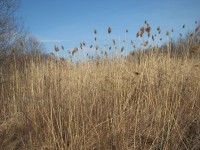Bronx River Parkway Reservation Wetland Restoration Underway
A press statement from County Executive Astorino’s office last week announced that restoration by Westchester County of the largest wetland in the Bronx River Parkway Reservation began earlier this month. Work in the Greenburgh-North White Plains area will continue through the winter and spring and is expected to be completed by early summer 2014.
“This project will not only improve the visual landscape, it will go a long way towards reducing the amount of pollution from stormwater runoff to improve water quality and help manage flooding in the reservation,” Astorino said in the press release.
The project will be overseen by the county’s Department of Planning, and its design and construction is paid for with $950,000 in county capital funds. The project was recommended in the 2007 Bronx River Watershed Management Plan developed by the county-led Bronx River Watershed Coalition.
 Created in 1925, the 807-acre reservation was the county’s first linear park and is the oldest park in Westchester. The project site adjoins the Bronx River in the Town of Greenburgh north of Fisher Lane and the North White Plains Train Station.
Created in 1925, the 807-acre reservation was the county’s first linear park and is the oldest park in Westchester. The project site adjoins the Bronx River in the Town of Greenburgh north of Fisher Lane and the North White Plains Train Station.
Through the decades, development of roads, neighborhoods and recreational facilities have altered the flow of stormwater runoff into the wetland. Currently, the wetland is physically separated from the river, diminishing the wetland’s role as a natural filter and sponge to treat and absorb stormwater and the pollution it carries.
Invasive reeds, shrubs and vines will be eradicated and the wetland and stream banks will be planted with thousands of native plants. Topography within the wetland will be modestly altered with machinery to create shallow channels and pools that will encourage a diversity of wetland habitats.
The sediment-filled and partially collapsed culverts that once connected the river to the wetland will be replaced with more effective structures so that the wetland will once more be connected to the river. This re-connection will enable the wetland to better absorb floodwaters and help nourish the wetland habitats.
Maintenance practices within an area north of the wetland, now mowed, will be changed to allow development of a more environmentally beneficial wet meadow.

Adam has worked in the local news industry for the past two decades in Westchester County and the broader Hudson Valley. Read more from Adam’s author bio here.
